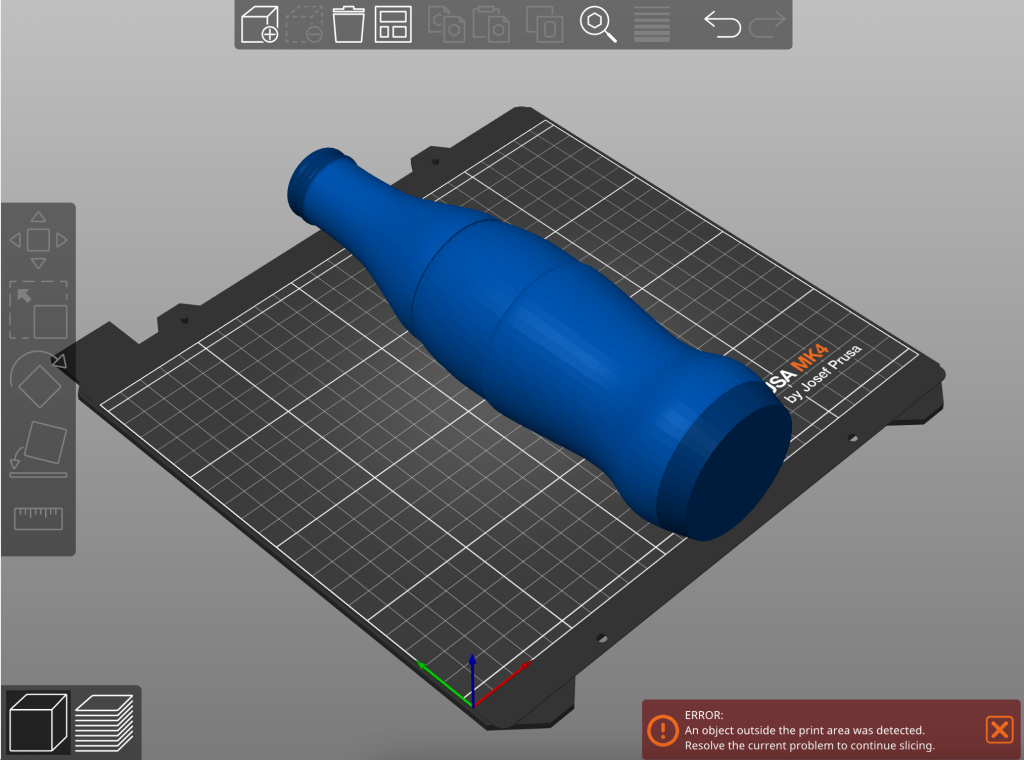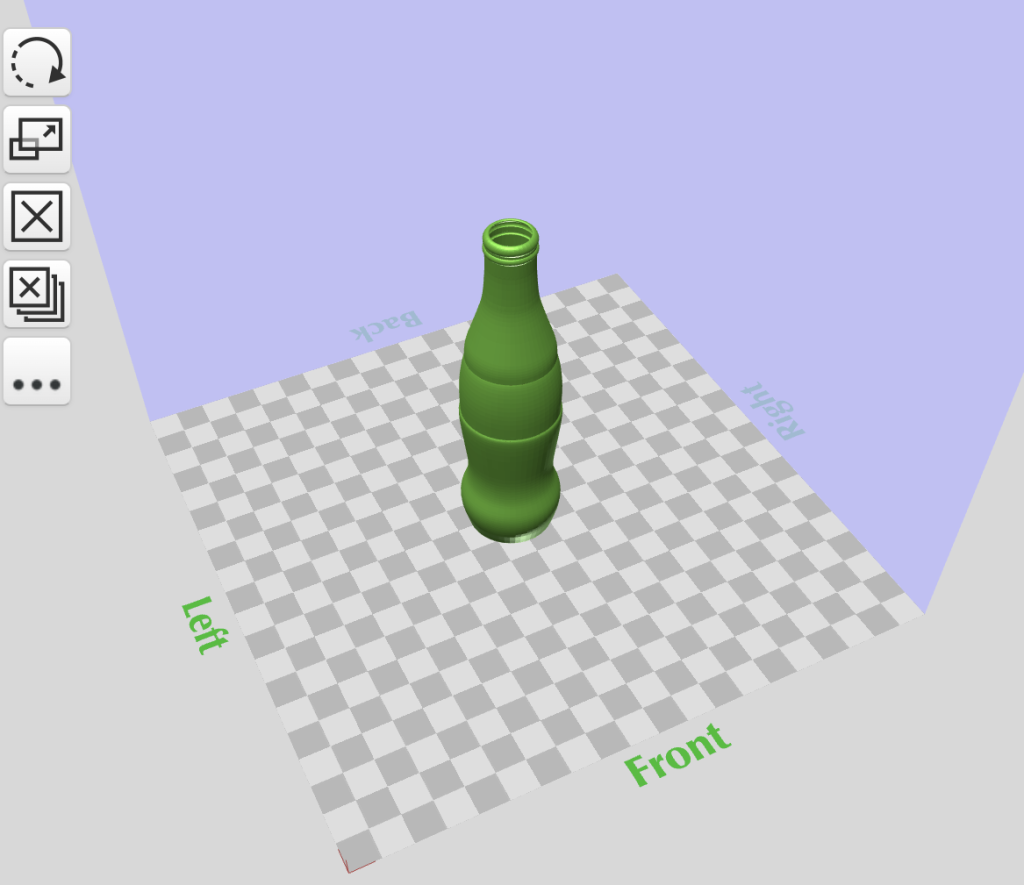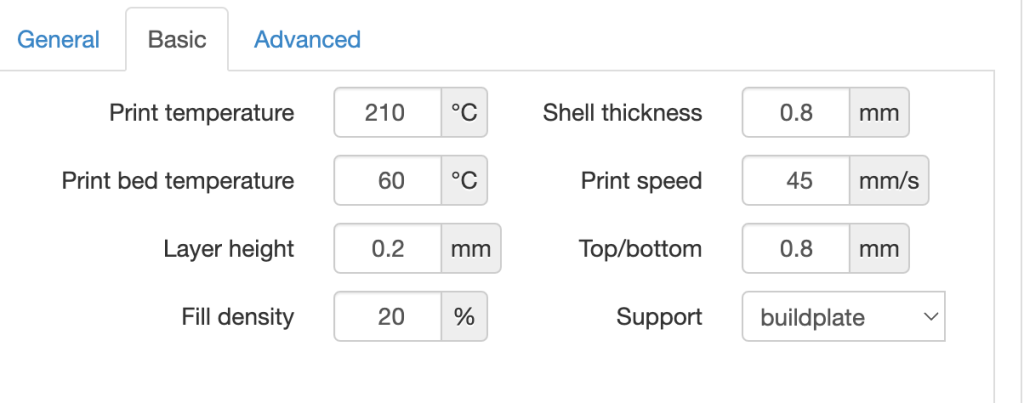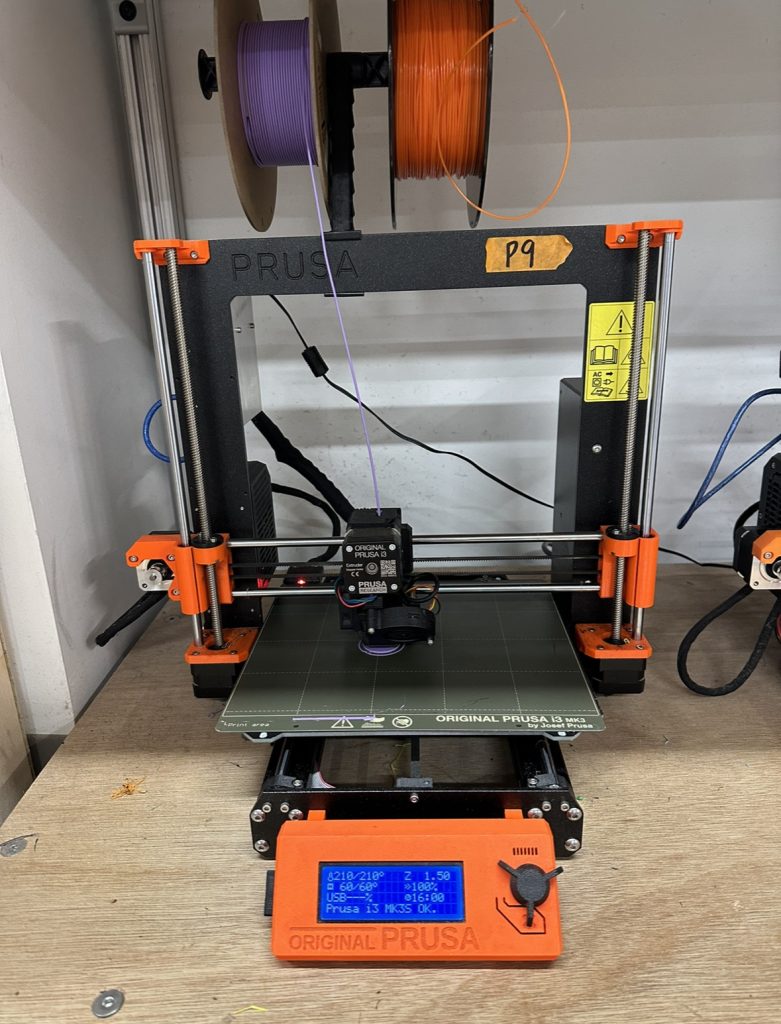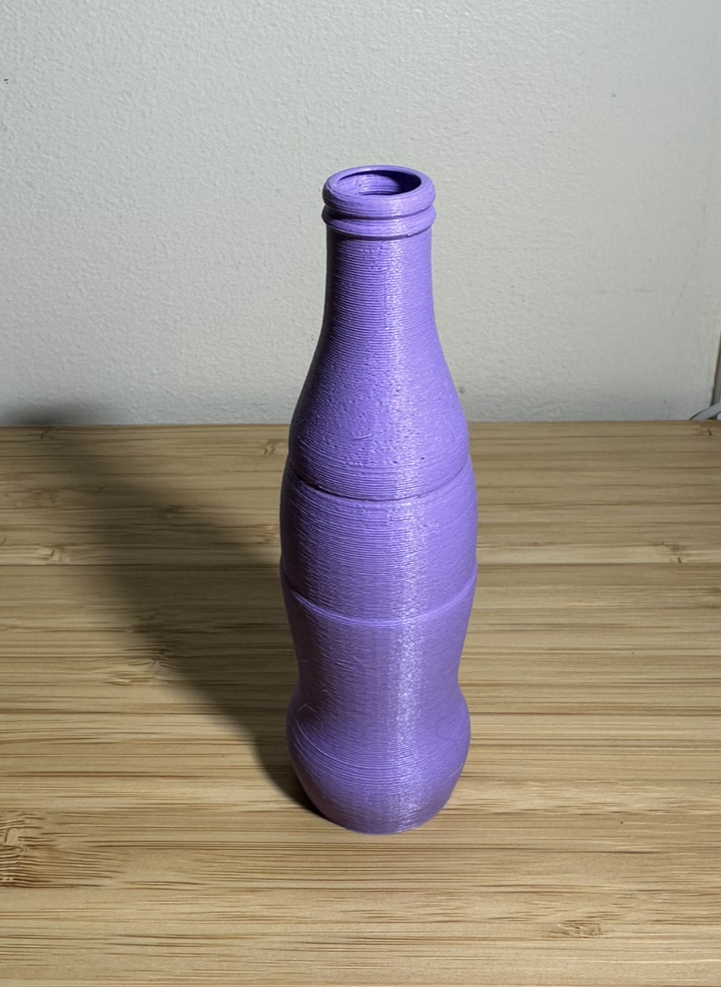October 10, 2023
For this homework #3 assignment, we were tasked with learning how to 3D print and get first-hand experience with additive manufacturing technology. Additionally, we were able to 3D print a design that we ourselves modeled using CAD software. I have not properly used the Nolop Makerspace on campus, so I was excited to do this assignment!
In Nolop, only about half of the 3D printers seemed to be occupied with current prints. When looking at the board, I noticed a lot of the empty printers had notes on the whiteboard with errors and bugs that needed fixing. Luckily, I only had to wait a few minutes for a working printer to become available.
In class, we learned how to use PrusaSlicer to slice our model and add it to an SD card to send it to the 3D printer. However, I learned that the 3D printers at Nolop run a little differently. Rather than using PrusaSlicer, Nolop printers have their own website (px.nolop.org where x is the number printer being used). I was able to upload my Coke bottle STL file and slice it directly on the website. Upon first import, my bottle was oriented horizontally and much larger than the print area. Initially, my 3D model was 230mm tall (~9.1″), which would not fit inside a 5″ x 5″ cube, so I decided to scale it down by half and reduce the amount of material used. Since my bottle is hollow on the inside, I oriented the bottle vertically by rotating it 90° on the x-axis, so no supports were needed, and the layers were less complicated.
Once the bottle was oriented appropriately, the total print time was only 2.5 hours, which is relatively quick as far as prints go. I used the Prusa i3 MK3 3D printer in Nolop that was loaded with purple PLA and a filament size of 1.75 mm. I set the infill to 20%, although that did not impact the material or print time for this object, as the bottle is hollow.
After exactly 2.5 hours, my print was done! I just removed it from the print bed; that was it. Since my bottle was oriented in a manner that didn’t need any additional support structures, there were no after-print touch-ups.
By printing with additive manufacturing technologies like 3D printing, objects with internal cavities can be fabricated in a much quicker and more efficient manner compared to older, more traditional technologies. From casual conversation and from TJ’s lecture in class on additive manufacturing, engineers and other professionals are able to utilize the capabilities of 3D printing to create porous structures that could be used to aid in bone growth in biocompatible implants. These sorts of porous structures would not have been produced at an industrial scale without additive technologies like these.
